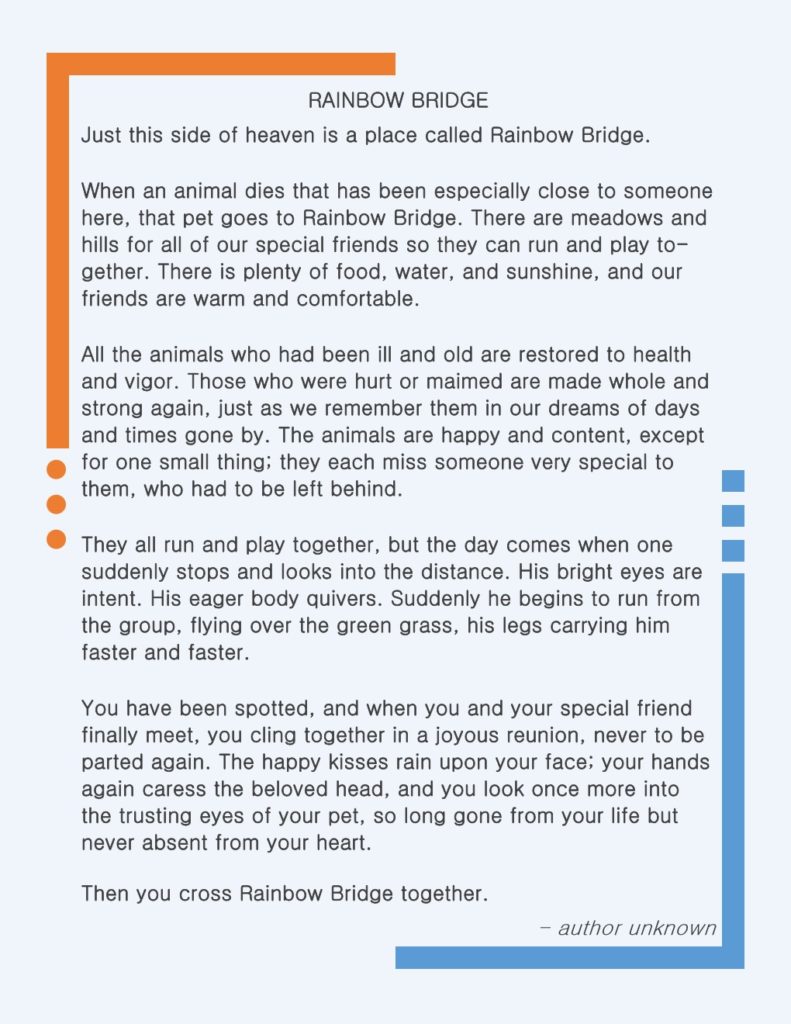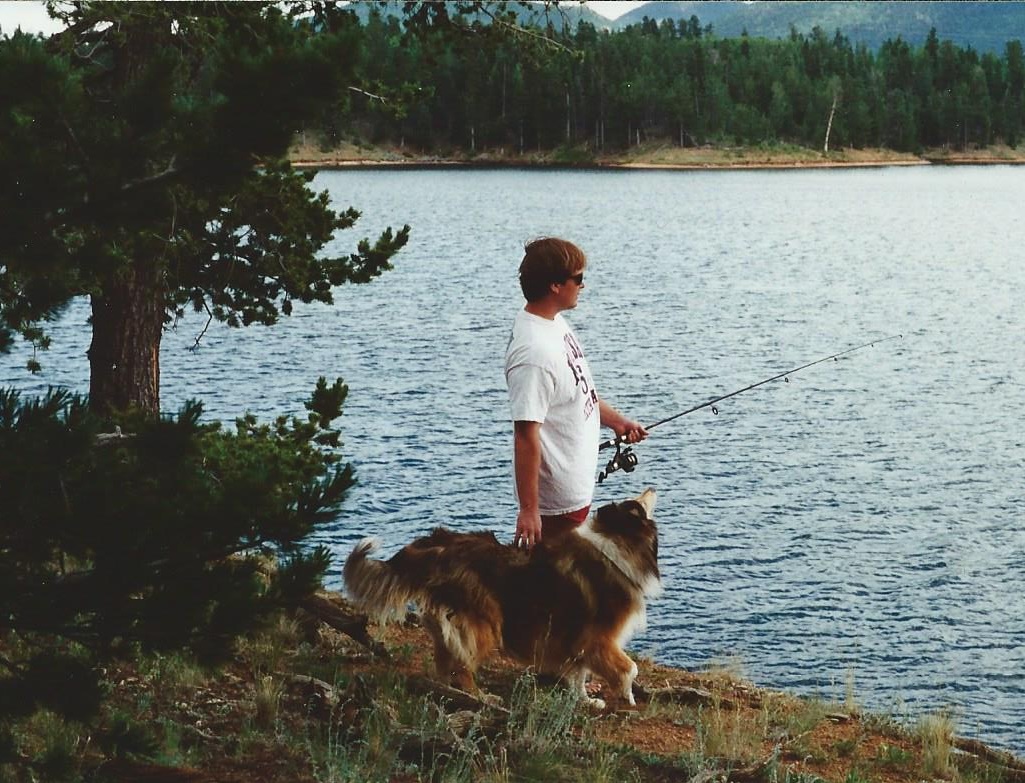
Plan for the last day to be a good one
…with a favorite food or treats (if that’s medically appropriate), a last outing, or more lap time than usual. Having a good day doesn’t mean your decision is the wrong one.
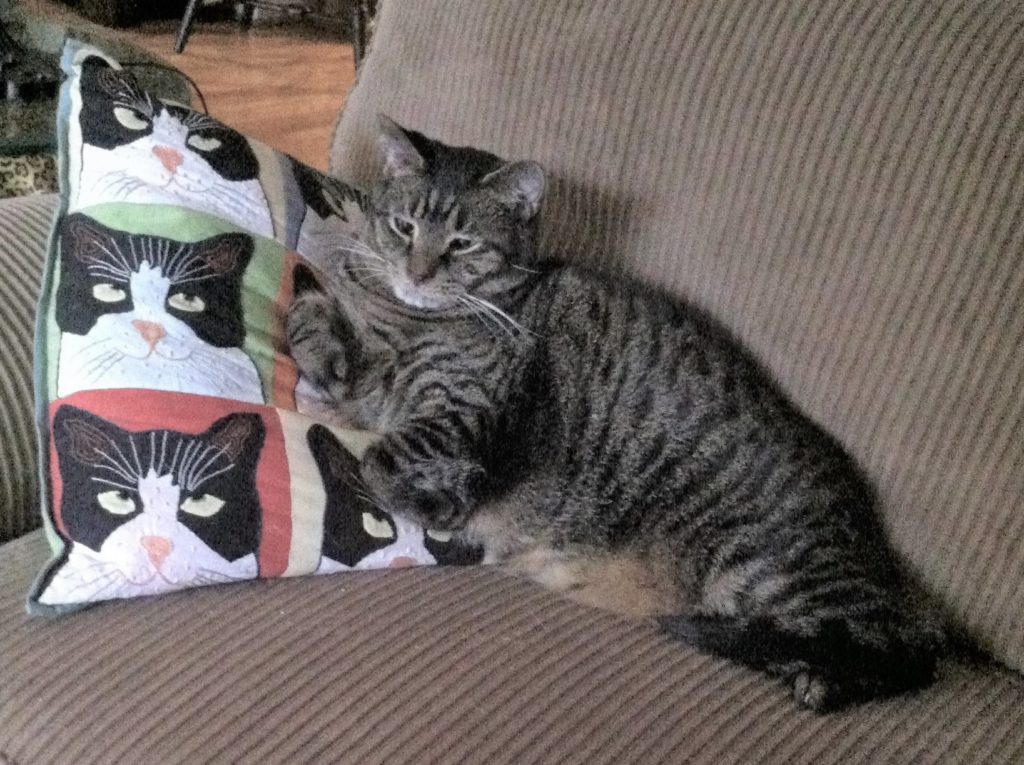
Zuzu had lost 25% of his body weight in 6 weeks. On a Monday the vet said it was cancer. We thought he had a bit more time. On Thursday morning Zuzu made it clear it was time. ZUZU, who owned Kathy
Even now, after you have considered every option, discussed them with everyone you trust, and worried yourself sick about your decision, you may be having second thoughts. Is it Time? is not trying to persuade or even encourage you to euthanize your pet. It can be the right decision and still break your heart.
Pet Euthanasia – Everything an Owner Must Know About Putting Down an Animal. (pet-informed-veterinary-advice-online.com) discusses reasons euthanasia may be the best or even only choice.
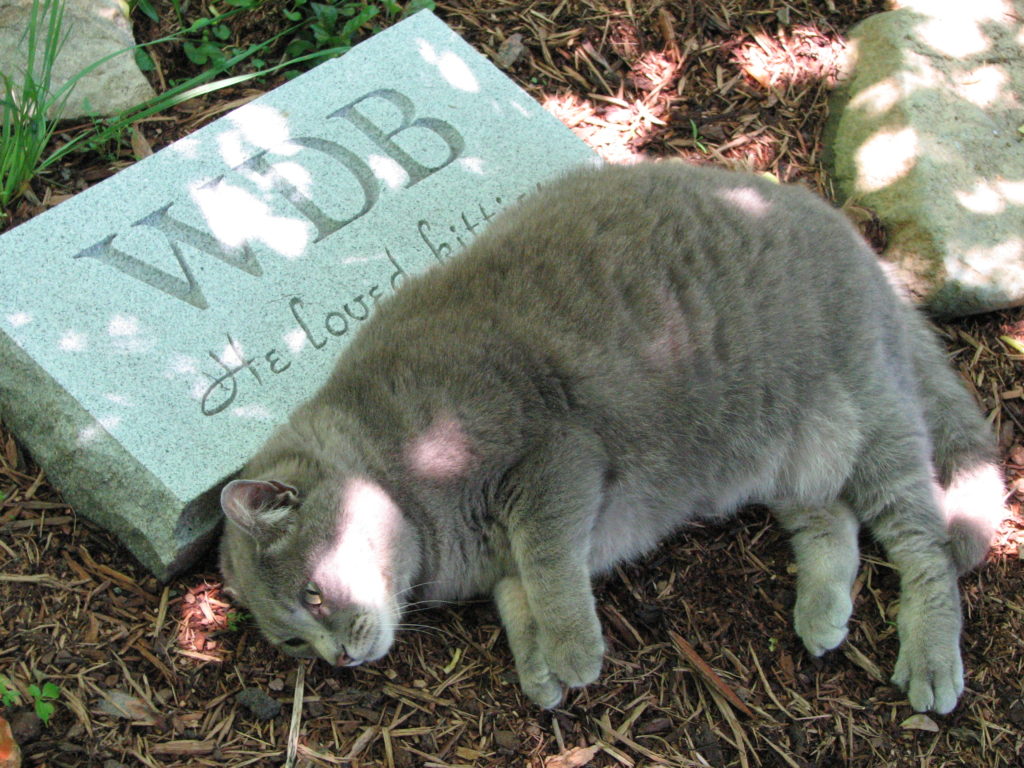
See WILL YOUR PET TELL YOU IT’S TIME? for more information
You are not a bad person if you choose to euthanize your pet.

IF YOU HAVE MADE THE DECISION TO EUTHANIZE
Nothing will make this easy. Losing a beloved companion isn’t supposed to be easy. But it will be easier in the moment and in the future if you can look back and know that, at every decision point, you made the best decision you could, and you made it with love.
IS IT TIME? deals with the things to consider as your pet approaches the end of its life. It covers the many things you can do before you decide that the kindest course for your pet is euthanization. If you are at this point, you and your vet have explored and implemented all feasible options and you have come to the decision that hastening your pet’s death through euthanasia is the most loving path.
This last journey for you and your pet can be more peaceful if you plan how and where you want it to take place, as well as when and who will be there. There are practical steps you can do in advance so at the end you can focus completely on your pet and its needs.
Tell your vet how much you want to know about the procedure
Rely on your veterinarian for any specifics. Although there are widely used protocols, the only one that matters is the one your vet uses, so describing them here could lead to unnecessary confusion or doubt.
Deciding between in your home or in the veterinarian’s office
In deciding whether the procedure should take place at home or in the veterinary office, consider:
- Is your vet or other “at home” provider available?
- Will it be difficult or traumatic to your pet to be taken to the veterinarian’s office?
- Do you want to set the stage for a peaceful passing with candles, soft music, or other comforts, and where can you do that?
- Will it be upsetting for you to associate an area of your home with the euthanasia of your pet?
- Who do you want to be present and where is that group best accommodated?
- If you plan for it to take place at home, are you prepared with a backup plan if the situation requires it?
Much of what applies to a vet-clinic euthanasia applies to the in-home choice, like preparing yourself and your family for the loss, planning as far in advance as reasonable, and making arrangements for handling your pet’s remains.
Whatever the location,…
Paperwork to do in advance You may need to fill out paperwork absolving your vet of any liability for performing the procedure, and you may be able to do this in advance.
Payment in advance It may be possible to arrange for payment in advance so you don’t have to deal with that in the midst of your most active grief. If cost is a factor, your local animal control or humane society may perform euthanasia free or at a reduced cost. Either agency may require your veterinarian’s written authorization that it is medically appropriate.
Who will be present? This is a moment when calming presence is important for your pet. You know best whose presence will be a comfort for both you and your pet — rather than an emotional hardship. That could mean only the adult owners are present, or adults and children of whatever age, or your pet’s human family as well as its animal companions, or no one.
In the moment, your pet may seem better or even her old self – wagging her tail, looking around alertly. Who is to say her happiness isn’t relief that her suffering will soon be over? Dogs, particularly, are eager to please, so your canine pet may wag its tail or otherwise show what looks like either recovery or a temporary reprieve from pain. If that happens you may see it as the answer to your prayers – “See, she isn’t that sick after all.” Weigh this moment against the information and observations you’ve gathered over recent weeks and months about your pet’s pain, prognosis, and quality of life.
Is it good to include other pets? There is a belief that your other companion animals, especially dogs, are confused when a member of their pack leaves and never returns. Peaceful Endings for Pets supports having the other pets present in most situations, writing that dogs instinctively know their companion is sick, and being present (or at least being able to see and sniff their companion) may ease their understanding of the change in their “pack.” If other pets may be disruptive to the peacefulness of the procedure, have someone take the other dogs for a walk, put the cat in the basement, etc.
Should you stay with your pet? The decision is intensely personal, so don’t let anyone pressure you either way. You may want to remember your pet in happier times. You may want the last hands to touch your pet and the last voice it hears to be yours. Or you may want the procedure to be carried out while you are in the waiting room, followed by you spending time with your pet for a private and unhurried goodbye. The question to ask yourself is, “Will I regret not being with her?” You don’t need to defend or apologize for either decision. If you plan to hold your pet on your lap, have something soft and moisture-proof for your pet to lie on.
At the veterinarian’s office
The wait in the reception area can feel endless and you may be fighting tears. To afford yourself quiet privacy, call your vet from the parking lot and say you’ll wait in your car until they are ready for you.
If you chose to leave your pet with your veterinarian, make sure the procedure is carried out immediately. Otherwise, your pet may be held until the end of the day – adding to what may already be a painful time.
At home
If you choose to use a mobile vet for an at-home euthanasia, the mobile vet may need to examine your pet prior to the euthanasia procedure because the practitioner may not be willing to perform a euthanasia without knowing the pet and having an in-depth conversation with its owner.
Your provider will guide you about how to choose and prepare the area for the procedure to take place.
Even if you plan an in-home procedure, if the situation becomes urgent and an in-home experience can’t occur in a timely way, you may need to take your pet to your regular vet in order not to prolong your pet’s suffering.
Aftercare
Hard as it is to consider, it will be physically and emotionally easier and will give you more choices if you think through “aftercare” in advance of the moment of need, whether your pet dies at home or in your veterinarian’s office.
The options include home burial, cremation followed by home burial, burial in a pet cemetery (with or without cremation), cremation without the return of ashes, leaving your pet with your veterinarian for your vet’s usual procedure, or other options available through your vet. If you leave your pet with your veterinarian for either cremation or disposal, you don’t have to apologize for asking how it is handled.
If you choose cremation, it can be individual (just your pet with the ashes returned to you in an urn for you to bury later or scatter) or “group” cremation with other people’s pets. In group cremations, the ashes are generally not returned, and the cost is generally less than for individual cremation. In either case, it may be comforting to include a favorite toy or blanket (although regulations may prohibit it being included in the cremation).
Practical considerations for a home burial
- Check zoning restrictions, which may preclude a home burial.
- If burial in a pet cemetery is a better option, make arrangements as far in advance as possible. The International Association of Pet Cemeteries and Crematories is one source of pet cemeteries.
- If you plan to move soon or if you rent, cremation may be a better option than home burial.
- From both an emotional and practical standpoint, it is a good idea to prepare the grave before you take your pet to the veterinarian.
- Take something to the vet’s office to wrap your pet in to take it home. An option that is both pricey and requires prior planning is the Paw Pod, advertised as “eco-friendly pet caskets and urns, made from 100% biodegradable materials.”
- If your pet is large, have a plan for moving it from your vehicle to the place you prepared for its burial.
- If marking your pet’s grave would be comforting, markers are available commercially, or you may choose to create one.
- Your culture or religion may provide additional ideas.
Nothing will make this easy. Losing a beloved companion isn’t supposed to be easy. But it will be easier in the moment and in the future if you can look back and know that, at every decision point, you made the best decision you could, and you made it with love.

All the named animals pictured in this blog were someone’s treasured pet. They may have crossed the Rainbow Bridge, but their absence makes them no less beloved.

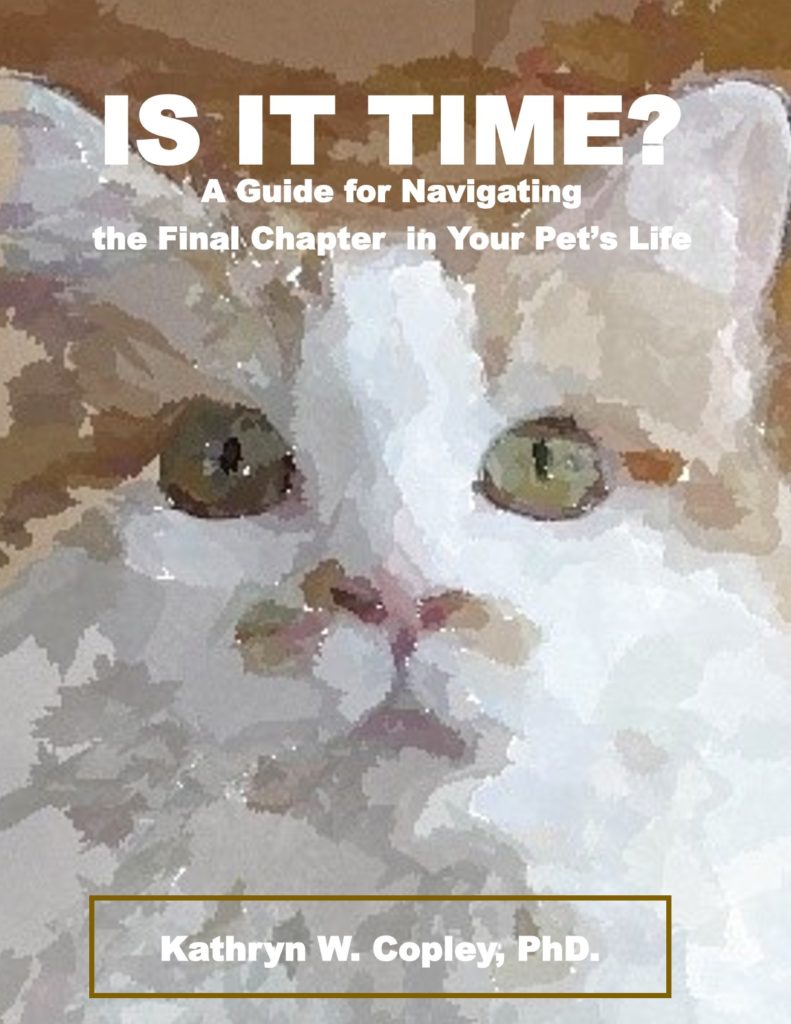
I may not know what tomorrow will bring, but today I have you.
